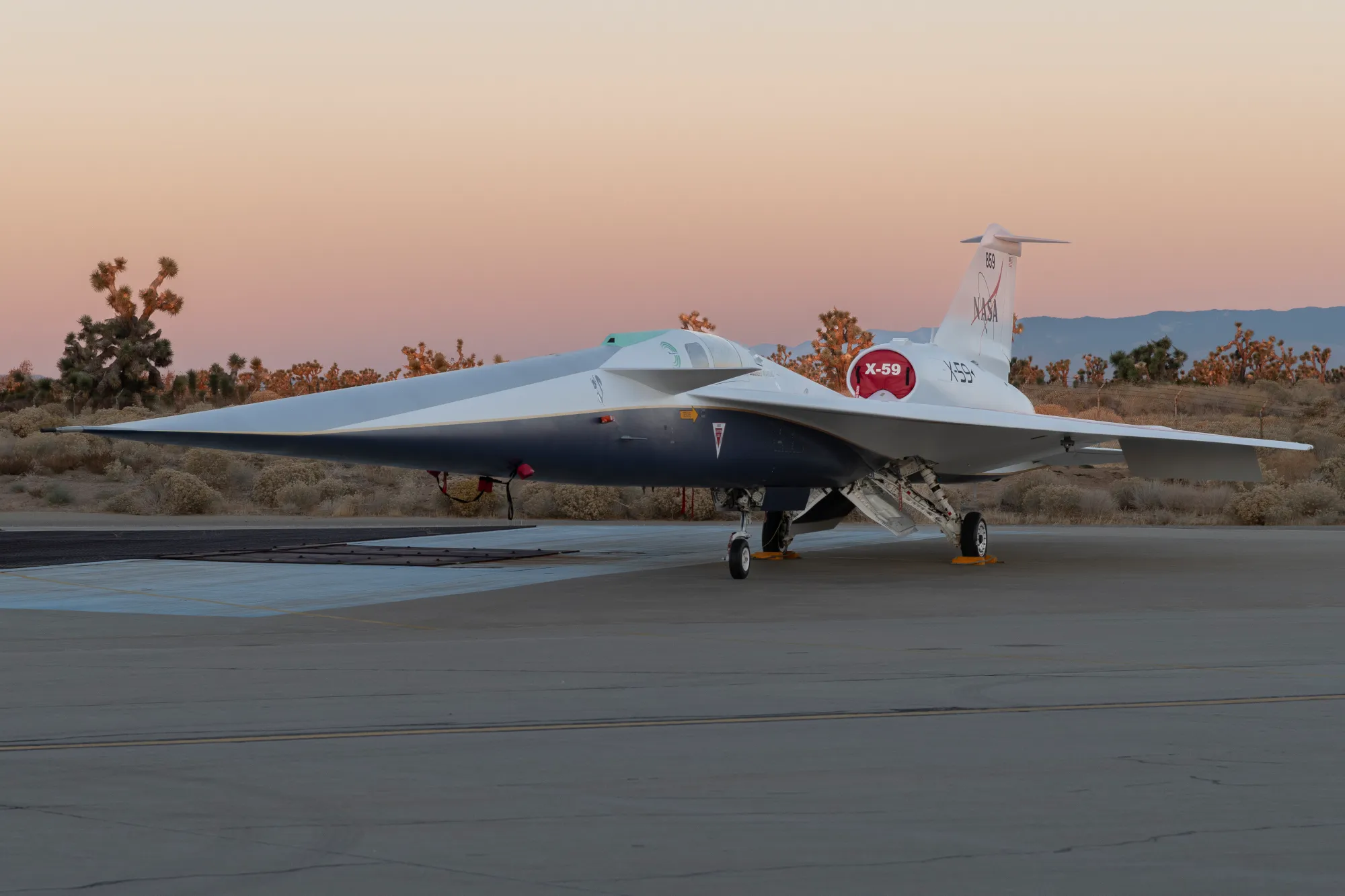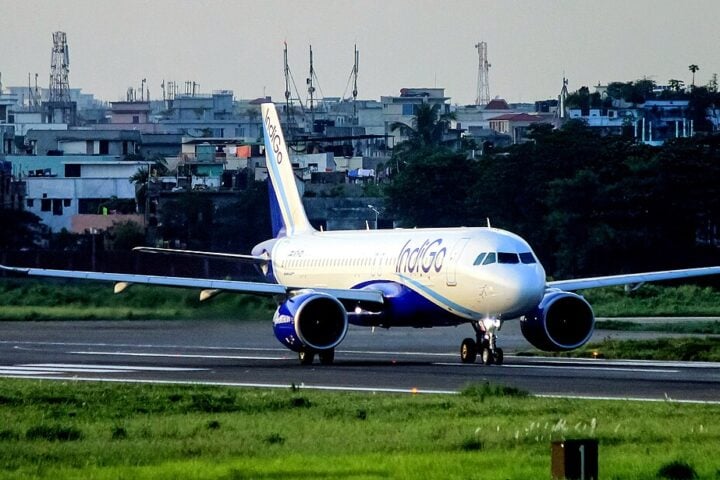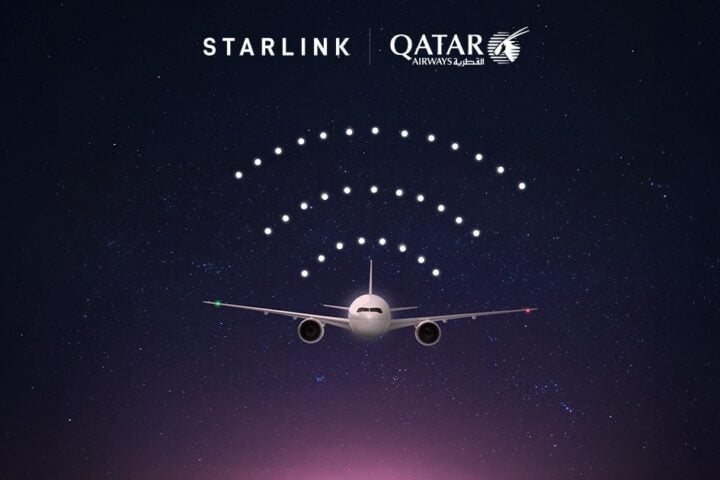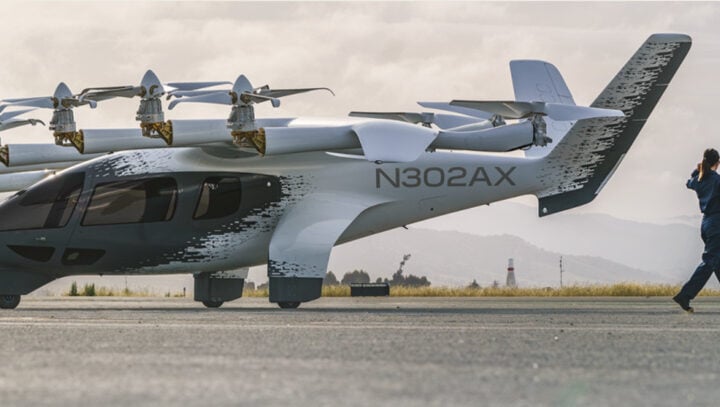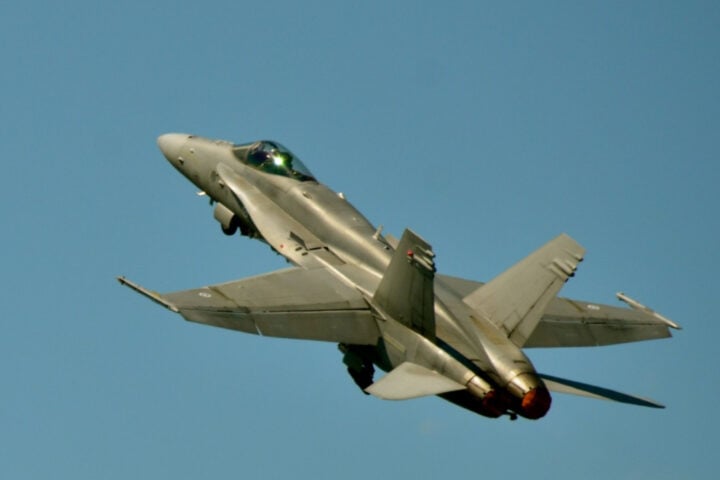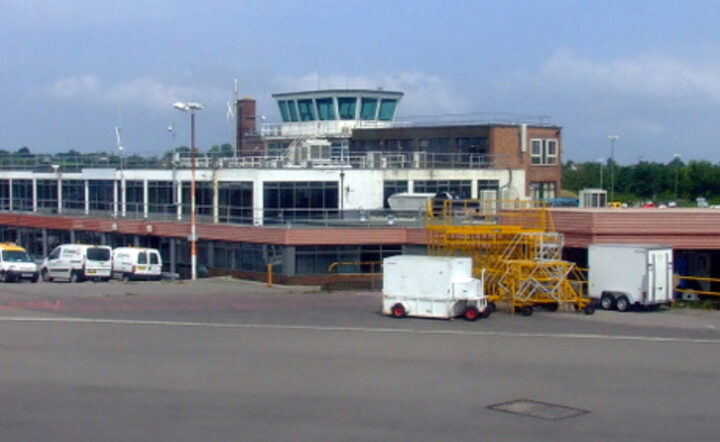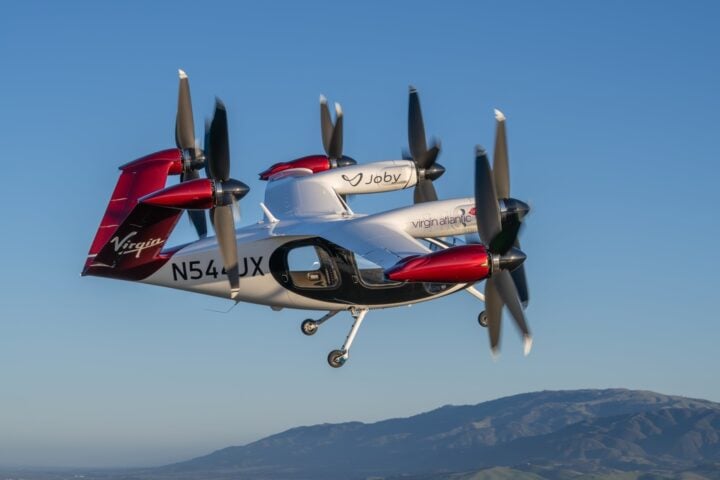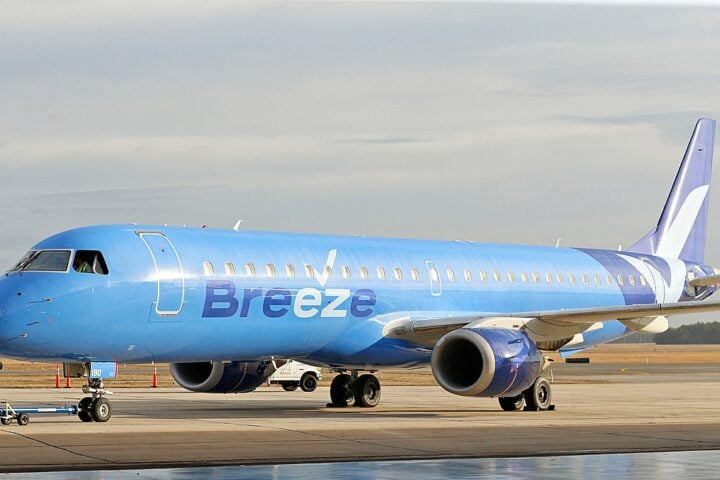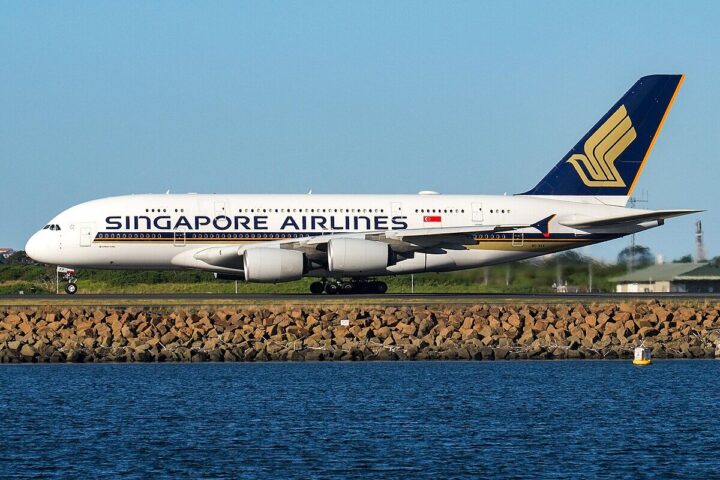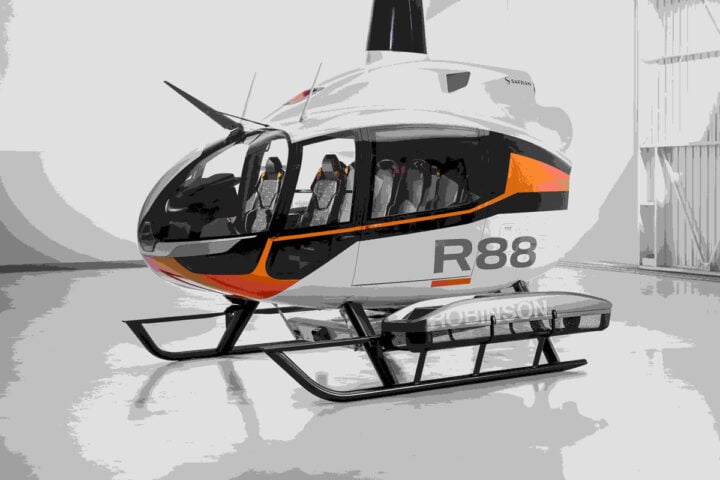On January 12, 2024, in a big event at Lockheed Martin’s Skunk Works in California, the much-anticipated NASA’s X-59 Quiet Supersonic Research Aircraft was presented. A plane that’s on the cusp of making supersonic travel over land possible. The X-59 was developed under the Quesst mission. The two main objectives of the Quesst mission are to:
1) Design and construct NASA’s X-59 research aircraft with technology that causes a sonic boom to be heard as a soft thump to people on the ground.
2) Fly the X-59 over a number of American communities in order to collect data on how people react to the sound produced during supersonic flight and provide that data set to international and U.S. regulators.
NASA’s Deputy Administrator, Pam Melroy, said, “The X-59 transcends its role as a mere aircraft; it stands as a symbol of our collective ambition to redefine the future of supersonic travel.” The special thing about the X-59 is that it makes low to no noise compared to the current loud sonic boom. Sonic booms are loud noises that happen when something travels faster than the speed of sound. In the U.S., rules don’t allow planes to go super fast over land because of these loud booms. The X-59 is trying to change that, which could mean new flight paths and way faster travel.
Robert Pearce from NASA, talked about the journey that led to the X-59. It started way back in 1947 when Chuck Yeager broke the sound barrier. The X-59 is the result of many years of work to make sonic booms less disturbing and could be a game-changer in how we fly.
“The journey of scientific and technical discovery that got us to where we are today began in 1947 when supersonic flight started right here in the California high desert with test pilot Chuck Yeager and the X1. It soon became apparent that the sonic boom, sharp when it flies overhead at supersonic speed, was going to be a problem. When the Concorde started to fly in the 1960s, ushering in supersonic flight, we continued to study, gaining key knowledge about how sonic booms affect people and how to reduce their volume. The new century brought a boom breakthrough. Innovative ideas, advanced simulation, ground, and flight testing showed us it was possible to design an aircraft that would produce a soft thump instead of a sonic boom. Is it quiet enough to allow supersonic flight over land? Our studies say yes, but the real answer can only be decided by the people who hear it. That’s the job of the X-59. After a test phase, we will fly over U.S. communities, collect data from the people below, determine if that sonic thump is acceptable, and then turn the data over to U.S. and international regulatory authorities in hopes to lift that ban.”
Robert Pearce, NASA’s Associate Administrator for Aeronautics
Here are also some cool features. It’s got a long, pointy nose that makes up almost a third of its length, helping to spread out the shockwaves that usually make a loud sonic boom. The cockpit is in the middle of the plane, and interestingly, it doesn’t have a front window. This was done on purpose to keep the plane quiet, but they use a hi-tech External Vision System to help the pilot see.
Greg Ulmer from Lockheed Martin Aeronautics talked about the importance this project holds. The X-59 is all about the new era the world has reached. The unveiling of the X-59 isn’t just a presentation of new tech; it’s a celebration of teamwork, dedication, and human imagination, even continuing the pursuit during the pandemic.
The X-59 is a step towards making supersonic flights quieter over land. It opens the door to new ideas in aircraft design, just like removing a front window for pilots. Pam Melroy summed it up well, saying, “The X-59 is not just an airplane. This is an X-plane. It’s a manifestation of a collaborative genius.”
“It’s actually an important step forward in and of itself in advancing aviation technology while prioritizing the comfort of those on the ground and [it’s a] huge challenge. Right? Limited visibility in the cockpit. The team developed the External Vision System which is really a marvel of high resolution cameras feeding an ultra high resolution monitor. Beyond its immediate applications for the X-59, the External Vision System has the potential to influence future aircraft designs where the absence of that forward-facing window may prove advantageous for engineering reasons, as it did for us. So, it’s creating capabilities we haven’t felt comfortable about putting in a crude flight evacuee without first testing it.”
Pam Melroy, NASA Deputy Administrator
